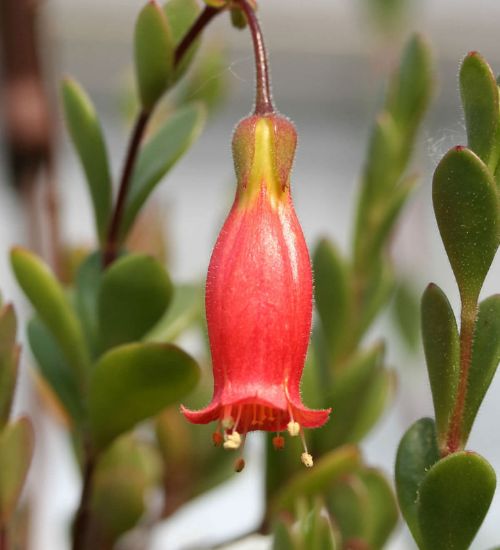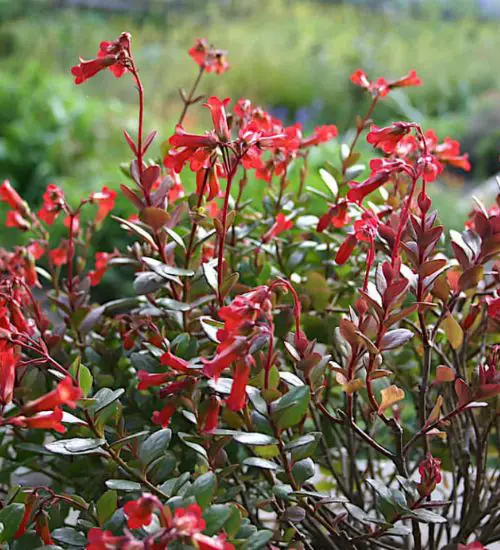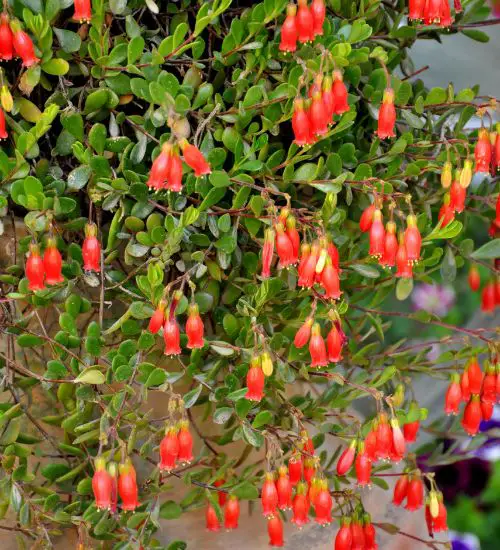Sun: Partial sun to partial shade
Water: Typical water needs for a succulent
Temperature: Zone 9a from 20° F to 25° F (-6.7 ° C to -3.9° C) to Zone 11b from 45° F to 50° F (7.2° C to 10° C)
Winter Survival: Not cold hardy
Propagation: leaves, stem cuttings, seeds
Flower: mid-winter to spring
Flower Type: Red-Orange
Toxic: Can be toxic to humans and animals
Dormant: summer
Space Requirement: Indoors & Outdoors
Common Problems: pests
Where to buy Kalanchoe Manginii (floriferous)?
Basc Care for Kalanchoe Manginii (floriferous)
Watering
Watering for Kalanchoe Manginii (floriferous) is a simple task. It requires Typical water needs for a succulent.
You can water your succulent more than often in extreme conditions but make sure that the soil is completely dry before watering your succulent again.
Fertilizing
Only feed this succulent during its active growing seasons which means winter. Use the right fertilizer applied in the right amounts. Applying half-strength balanced fertilizer every month or so is recommended for optimal results.
Do not fertilize during summer as the plant is dormant.
Sun & Location Requirements for "Beach Bells, Chandelier Plant"
When planting Kalanchoe Manginii (floriferous), be sure to find a spot that gets partial sun and shade for optimal growth. A good rule of thumb is to provide four to six hours of direct sunlight per day with some protection from the midday heat.
As per this succulent profile, it is only able to stay healthy when the environment temperature is above the range of zone 9a from 20° F to 25° F (-6.7 ° C to -3.9° C).
When temperatures drop below freezing, it is important to take precautions to protect Kalanchoe Manginii (floriferous) from the cold. Insulating and providing adequate drainage for the plant are key elements in helping it survive winter weather. Wind and sun exposure should also be minimized to prevent frost damage.
Any succulents in the group will need a medium space to grow. You can place your pot at your table or window. Since this plant needs more space than mini succulents, you should consider do not plant them together with other succulents/plants.
Kalanchoe Manginii (floriferous) also benefits from some indirect light throughout the day as well, so make sure you give it enough space to soak up light without becoming too exposed to heat.
Propagation
Growing succulents from leaves is an enjoyable and rewarding experience. All it takes is a few healthy leaves, some potting mix, and regular watering. Soon you'll have beautiful new succulents that are a product of your effort!
One of the easiest and most popular ways to propagate Kalanchoe Manginii (floriferous) is by stem cuttings. This method involves cutting a stem from an existing succulent and planting it in soil to grow a new plant.
Propagating Kalanchoe Manginii (floriferous) from seeds is a great way to produce new plants without relying on cuttings or divisions. It's important to look for healthy, dark and plump seeds that are slightly sticky when touched. The soil should be pre-mixed with well-draining potting mix, before evenly sowing the seeds and pressing them into the surface. To ensure successful germination, gentle misting of the soil should be done and placed in indirect light.
Toxicity

Although it may be tempting to grow Kalanchoe Manginii (floriferous) due to its beautiful flowers and vibrant colors, it is important to be aware of the potential dangers associated with this succulent. Ingesting any part of the plant can cause serious health complications. If you are considering growing it, make sure you take all necessary safety precautions and consult a professional if necessary.
Pests and Diseases
Kalanchoe Manginii (floriferous) can be affected common pests and diseases like most of the other succulents such as aphids.
If you do spot any of pest signs, you can treat your succulent using below methods.
- Aphids: quarantine, clean infected plants, soapy water.
Besides that, to prevent serious health issues from happening, keep your succulent in a well-ventilated area and check it regularly for any signs of pests or health problems.


